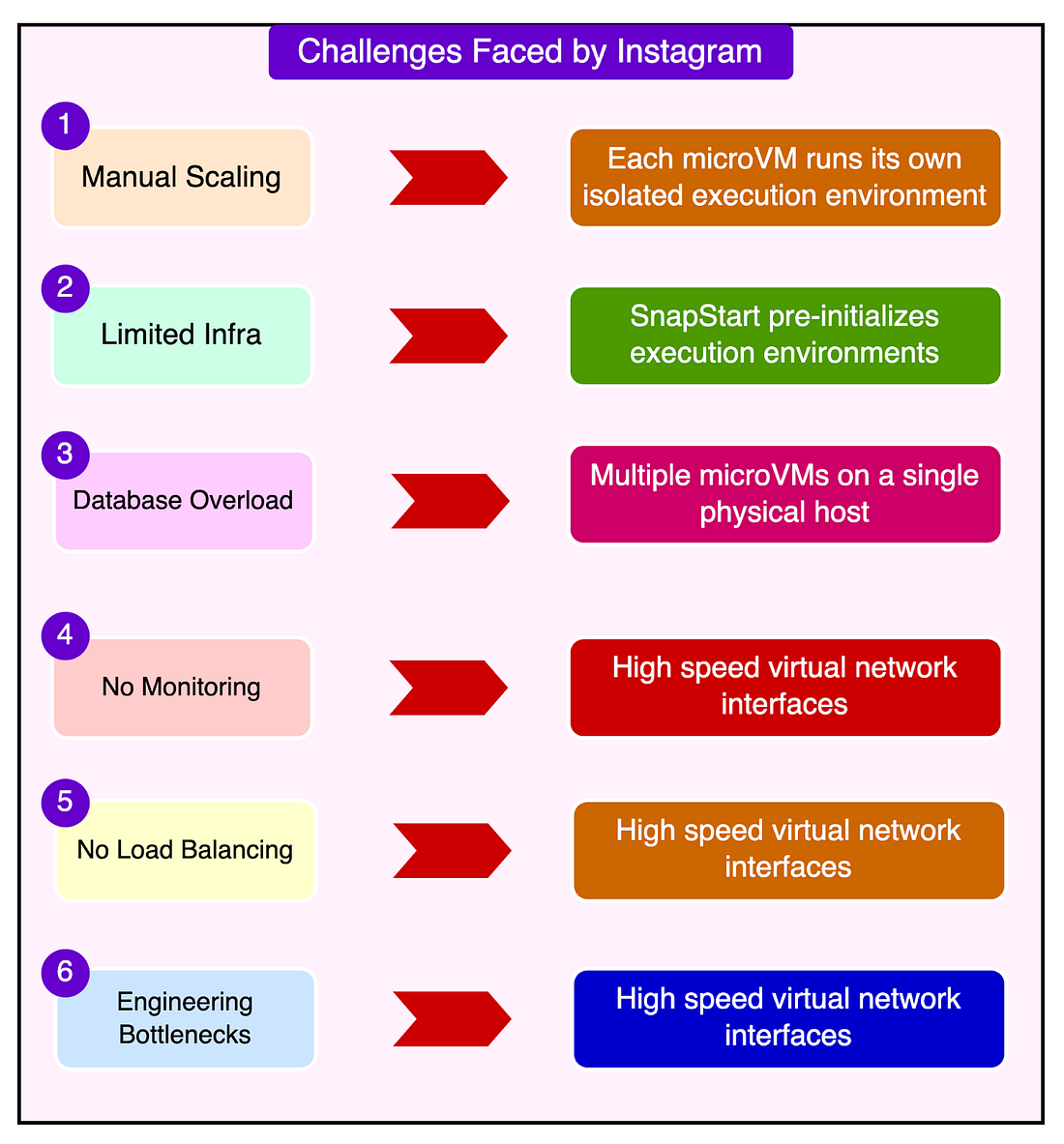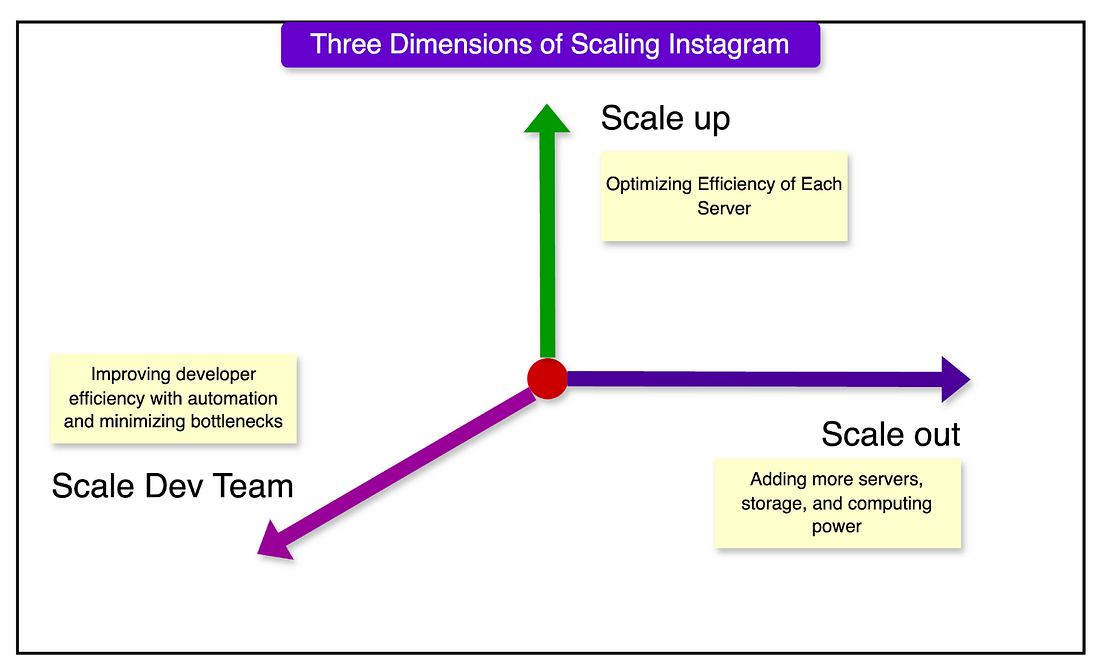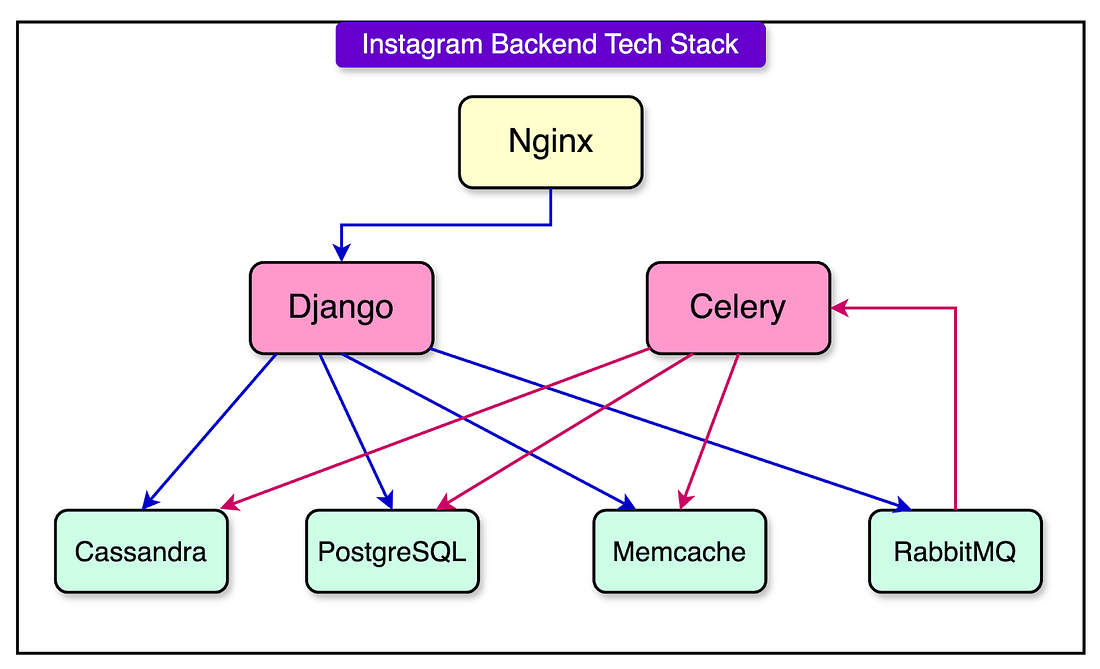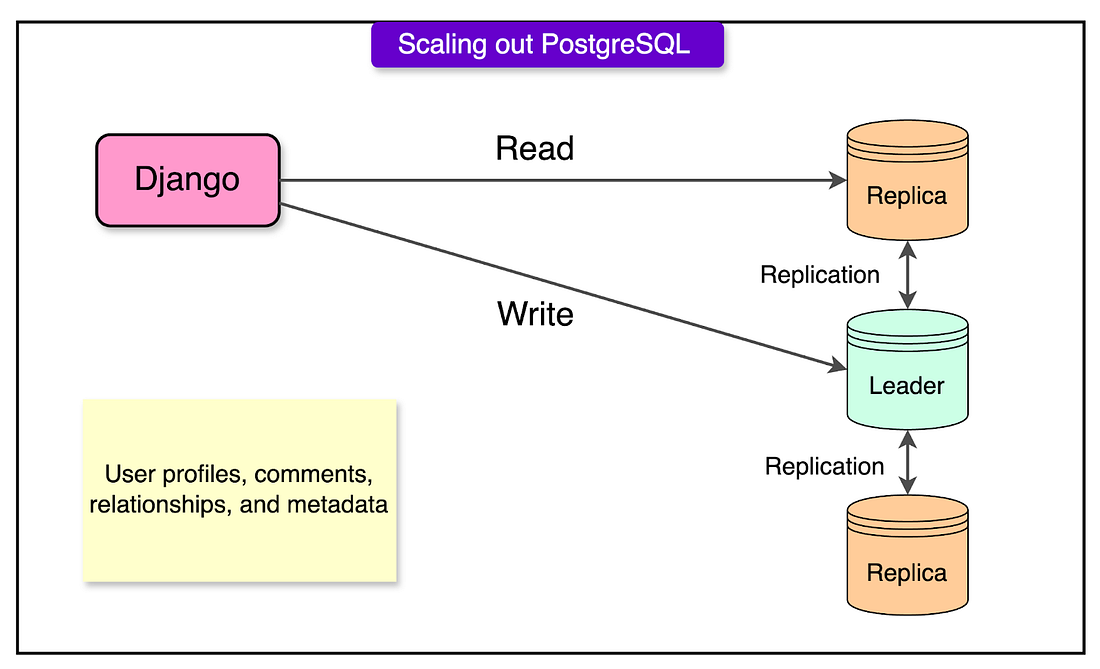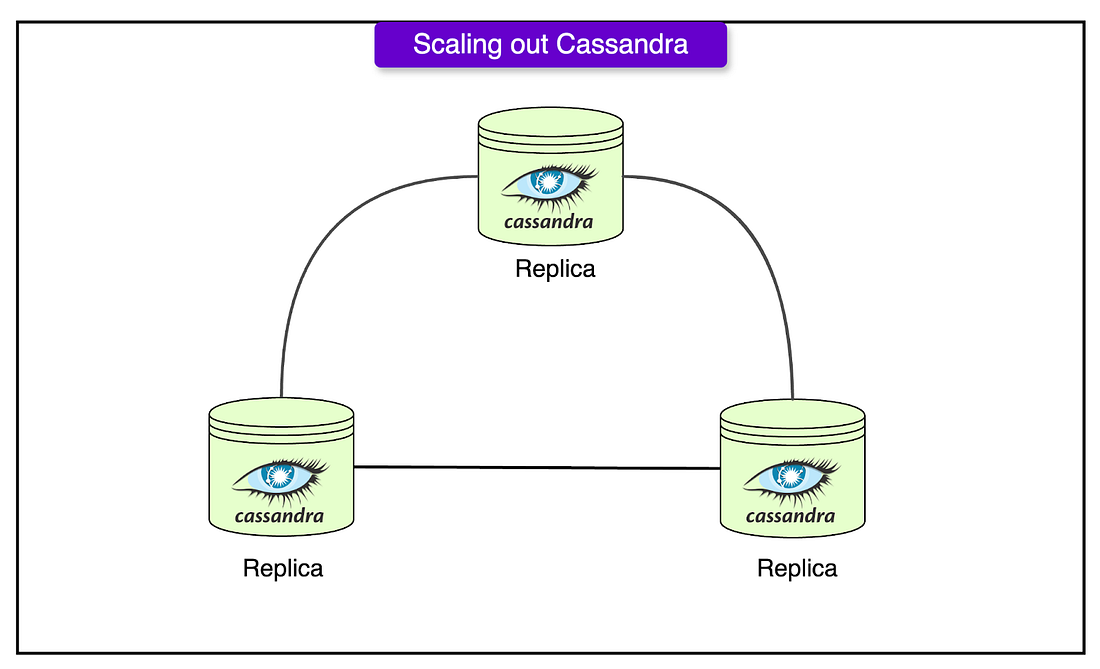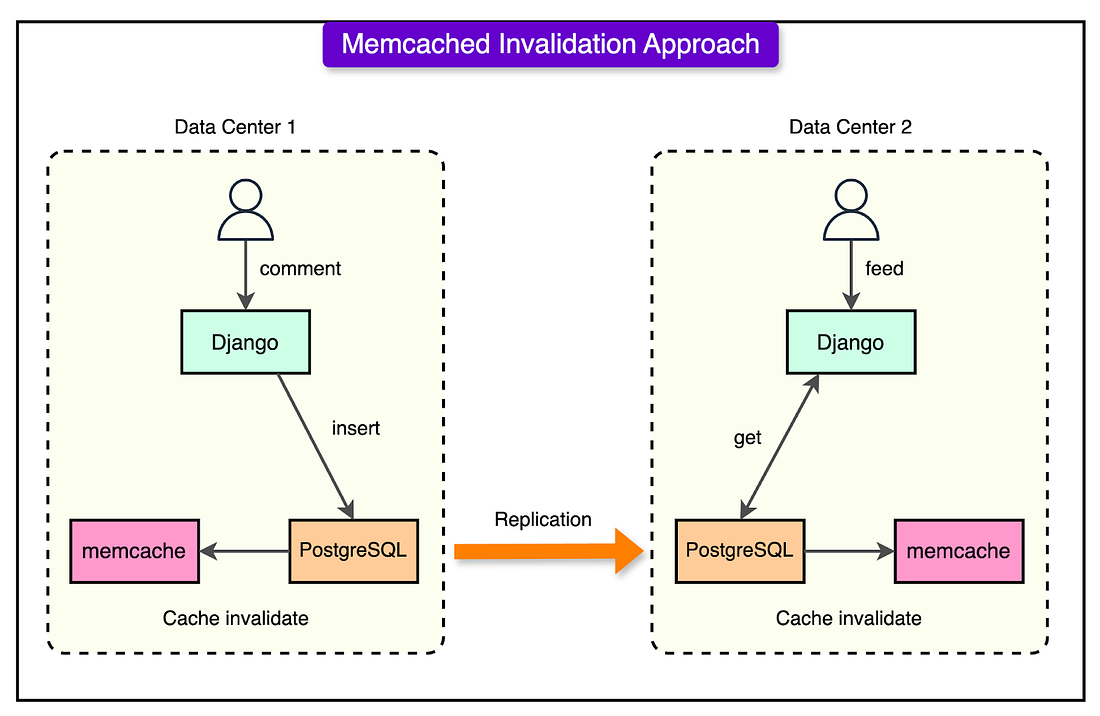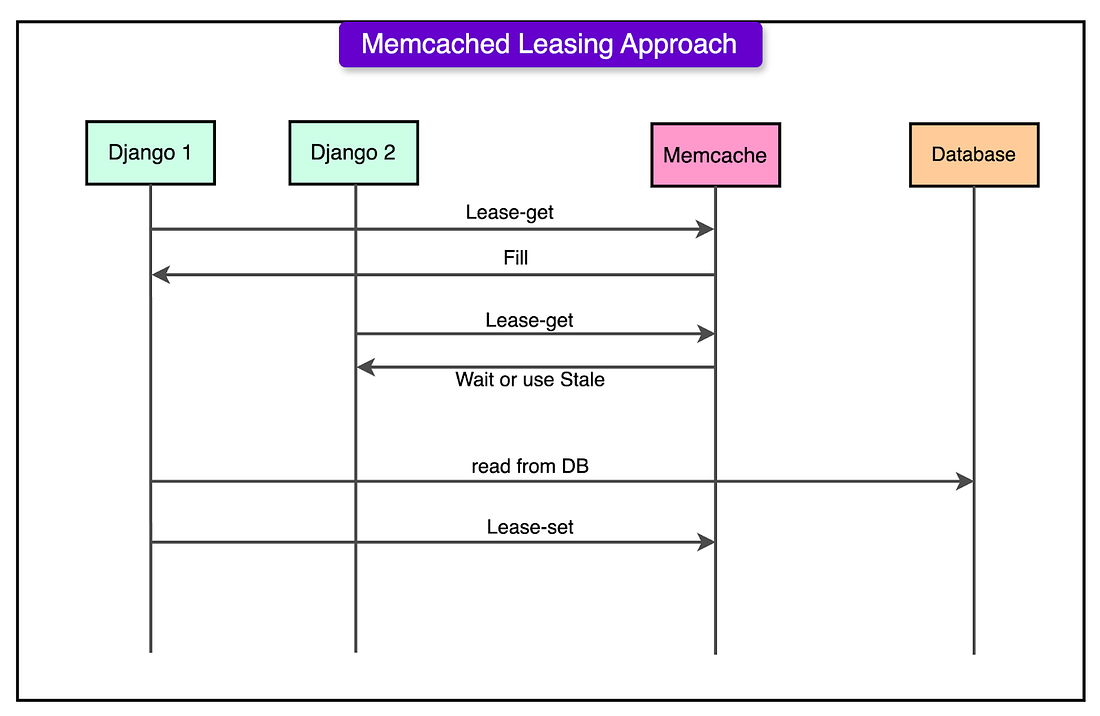- Mailing Lists
- in
- How Instagram Scaled Its Infrastructure To Support a Billion Users
Archives
- By thread 5376
-
By date
- June 2021 10
- July 2021 6
- August 2021 20
- September 2021 21
- October 2021 48
- November 2021 40
- December 2021 23
- January 2022 46
- February 2022 80
- March 2022 109
- April 2022 100
- May 2022 97
- June 2022 105
- July 2022 82
- August 2022 95
- September 2022 103
- October 2022 117
- November 2022 115
- December 2022 102
- January 2023 88
- February 2023 90
- March 2023 116
- April 2023 97
- May 2023 159
- June 2023 145
- July 2023 120
- August 2023 90
- September 2023 102
- October 2023 106
- November 2023 100
- December 2023 74
- January 2024 75
- February 2024 75
- March 2024 78
- April 2024 74
- May 2024 108
- June 2024 98
- July 2024 116
- August 2024 134
- September 2024 130
- October 2024 141
- November 2024 171
- December 2024 115
- January 2025 216
- February 2025 140
- March 2025 220
- April 2025 233
- May 2025 239
- June 2025 303
- July 2025 190
How Instagram Scaled Its Infrastructure To Support a Billion Users
How Instagram Scaled Its Infrastructure To Support a Billion Users
Caching for Performance: Virtual Masterclass (Sponsored)Insider tips for navigating caching strategies and tradeoffs This masterclass shares pragmatic caching strategies for latency-sensitive use cases. We’ll explore a variety of caching options – how they’re architected, how that impacts their “sweet spot” and tradeoffs, as well as tips for working with them. After this free 2-hour masterclass, you will know how to:
This is a great opportunity to learn how caching strategies are evolving and how to best take advantage of them. Disclaimer: The details in this post have been derived from Instagram Engineering Blog and other sources. All credit for the technical details goes to the Instagram engineering team. The links to the original articles are present in the references section at the end of the post. We’ve attempted to analyze the details and provide our input about them. If you find any inaccuracies or omissions, please leave a comment, and we will do our best to fix them. Instagram was launched in 2010 by Kevin Systrom and Mike Krieger as a simple photo-sharing app. The app allowed users to instantly upload, edit, and share photos, applying filters that gave images a professional touch. Unlike other social media platforms at the time, Instagram focused exclusively on visual storytelling, making it an instant hit among smartphone users. The platform's simplicity and mobile-first approach led to rapid adoption. Within just two months, Instagram had gained 1 million users, a milestone that took Facebook nearly a year to achieve. The app grew exponentially, reaching 10 million users in one year and 30 million users by early 2012. By April 2012, Instagram had reached 50 million users and was attracting serious investment interest. Facebook acquired Instagram for $1 billion, a shocking move at the time, as the company had just 13 employees. However, Mark Zuckerberg saw Instagram’s potential as a mobile-first social network and wanted to integrate it into Facebook’s ecosystem while allowing it to function independently. At the time of the acquisition, Instagram was still operating on a relatively small-scale infrastructure hosted on Amazon Web Services (AWS). The app was experiencing major scalability challenges, such as server overloads, database scaling issues, and limited engineering resources. After joining Facebook, Instagram migrated from AWS to Facebook’s data centers, preparing it for its next phase of hypergrowth. Under Facebook’s ownership, Instagram continued to scale at an unprecedented pace. By 2014, it had 300 million users, and by 2018, it had breached the billion-user mark. To handle billions of daily interactions, Instagram had to adopt advanced scaling strategies, including distributed databases, caching, and multi-region infrastructure. In this article, we’ll look at how Instagram scaled its infrastructure to handle this massive scale. Instagram’s Early Infrastructure ChallengesWhen Instagram first launched in 2010, it was a small company with limited engineering resources. However, with time, Instagram grew into one of the most widely used social media platforms in the world. This rapid increase in user engagement placed an enormous strain on its infrastructure, requiring continuous optimization and scaling efforts. Some key metrics highlighting Instagram’s scale (in 2017-2018) are as follows:
The platform’s rapid growth exposed significant scalability challenges, forcing engineers to adopt temporary solutions to keep the system running. However, as user activity continued to increase exponentially, these short-term fixes became unsustainable, leading to the urgent need for automation and a scalable architecture. Some challenges faced by Instagram in its early days are as follows:
The Three Dimensions of Scaling at InstagramAs Instagram’s user base grew exponentially, the company had to develop scalable infrastructure to handle billions of daily interactions. Scaling is not just about adding more hardware. It also involves optimizing resources and ensuring that the engineering team can operate efficiently. Instagram approached scalability in three key dimensions: 1 - Scaling Out: Expanding Infrastructure with More ServersScaling out refers to adding more hardware (servers, storage, and computing power) to handle increased traffic. Some new strategies were adopted:
Migrating to Facebook’s data centers allowed Instagram to take advantage of Facebook’s existing tools and infrastructure, such as:
However, the migration was quite challenging. Instagram needed to migrate petabytes of media files, user data, and metadata from AWS to Facebook’s data centers. Instead of a single "big bang" migration, data was incrementally copied and synchronized across both systems to ensure consistency. Facebook’s Haystack storage system was used to optimize media storage and retrieval. Instagram’s backend services were initially built to run on AWS’s Elastic Compute Cloud (EC2). To optimize performance, these services were re-engineered to run on Facebook’s Tupperware containerization system, allowing for better resource utilization and auto-scaling. 2 - Scaling Up: Optimizing Efficiency of Each ServerScaling up means improving the performance of existing infrastructure rather than adding more hardware. This involved reducing CPU load, optimizing queries, and using caching mechanisms to maximize server efficiency. In Instagram’s case, adding more servers was not a sustainable long-term solution due to cost and resource limitations. Each request from a user (loading a feed, liking a post, adding a comment) resulted in multiple database queries, slowing down response times. Inefficient memory usage and unoptimized Python code caused unnecessary resource consumption. The Instagram engineering team implemented some solutions to deal with these issues:
3 - Scaling the Engineering TeamScaling the engineering team means ensuring that developers can continue to work efficiently as the company grows. This involves better deployment strategies, automation, and minimizing bottlenecks in the development process. Instagram grew from a small startup to a company with hundreds of engineers, leading to challenges in code management and deployment. More engineers working on the same codebase increased merge conflicts, regressions, and debugging complexity. To handle these problems, the Instagram engineering team embraced continuous deployment. Instead of periodic large updates, they shifted to a rolling release model, deploying code changes 40+ times per day. This ensured that small updates could be tested, monitored, and rolled back quickly if needed. New features were deployed gradually to a small subset of users before being rolled out globally. Engineers could monitor performance metrics and detect bugs early, preventing widespread failures. They also implemented real-time monitoring tools to detect performance regressions. Instagram’s Backend ArchitectureAs Instagram grew into a platform handling billions of interactions daily, it required a robust, scalable, and efficient backend architecture. The system needed to process a huge number of user requests, including media uploads, likes, comments, and notifications while maintaining high availability and low latency. The main components of the backend architecture are as follows: 1 - Django - The Core Web FrameworkDjango, a high-level Python web framework, serves as the foundation of Instagram’s backend. It provides the core structure for handling HTTP requests, user authentication, database interactions, and API endpoints. The main advantages of Django are as follows:
2 - RabbitMQ - Message BrokerRabbitMQ acts as a message broker, facilitating communication between different services. Instead of handling everything in a single request, RabbitMQ enables asynchronous task execution, improving performance and reliability. Instagram uses RabbitMQ to decouple components and allow different services to interact without being directly dependent on each other. It handles spikes in traffic and manages message persistence even if one part of the system temporarily fails. 3 - Celery for Async Task ProcessingCelery is a distributed task queue system that works alongside RabbitMQ to execute background tasks. It ensures that long-running processes do not slow down real-time user interactions. Instagram uses Celery to handle asynchronous tasks such as sending emails or processing large media files. Celery also has fault tolerance where a task failure results in automatic retries. Celery workers can be distributed across multiple servers, handling high workloads efficiently. How the Components Work Together?Instagram’s backend components operate in a coordinated manner, ensuring efficiency. Let’s understand the process when a user likes a post:
Storage Services in Instagram’s ArchitectureStorage services are responsible for persisting user data, media files, and metadata across multiple distributed databases. Instagram employs a combination of structured and distributed storage solutions to manage different types of data efficiently.
See the diagram below for PostgreSQL scaling out with leader-follower replication. Also, the diagram below shows Cassandra scaling. Since Instagram’s storage services are distributed across multiple data centers and geographic regions, maintaining data consistency is a major challenge. The key data consistency challenges are as follows:
The Instagram engineering team uses several strategies to address these consistency challenges. For example, PostgreSQL is used for critical transactions, such as financial transactions, user authentication, and content moderation, where strong consistency is required. On the other hand, Cassandra is used for highly scalable workloads, such as activity feeds, where slight delays in consistency are acceptable. Memcached entries are automatically invalidated when new data is written to PostgreSQL or Cassandra, preventing outdated information from being served. See the diagram below that shows how cache invalidation is handled. Memcache Lease MechanismAs Instagram scaled to handle billions of daily interactions, it encountered a major challenge known as the thundering herd problem. The issue occurs for frequently accessed data (like counts, user feeds, and comments), which is stored in Memcached for fast retrieval. When a cached value expires or is invalidated due to an update, multiple web servers request the same data from the database. If thousands or millions of users request the same piece of data at the same moment, the database gets overloaded with duplicate queries. To mitigate this, Instagram implemented the Memcache Lease mechanism, which helps prevent multiple redundant database queries by controlling how cache misses are handled. Here’s how it works:
Instagram’s Deployment ModelInstagram operates on a continuous deployment model, meaning new code is pushed to production multiple times per day. This approach allows Instagram to iterate quickly, fix issues promptly, and introduce new features without causing major disruptions. Instagram’s deployment pipeline includes code review, automated testing, canary testing, and real-time monitoring to ensure that new changes do not introduce performance regressions. Engineers submit changes through code review to ensure quality and maintainability. Every code change must pass unit tests, integration tests, and performance benchmarks before being merged into the main branch. Once code is merged, it is automatically tested in staging environments to identify functional or security issues. Also, instead of deploying changes to all users at once, Instagram first deploys updates to a small subset of production servers (canary servers). Engineers monitor key performance metrics (CPU usage, memory consumption, error rates) to ensure the new code does not introduce regressions. Lastly, Instagram also monitors and optimizes CPU usage. It uses Linux-based profiling tools to track CPU usage at the function level. Engineers analyze which parts of the codebase consume the most CPU cycles and optimize them for better efficiency. They also use profiling tools and replace CPU-intensive Python functions with optimized C++ implementations for better performance. ConclusionInstagram’s ability to scale while maintaining high performance and reliability is proof of its well-designed infrastructure and deployment strategies. By leveraging Django, RabbitMQ, Celery, PostgreSQL, and Cassandra, Instagram ensures seamless processing of billions of daily interactions It has separated computing and storage services to support efficient resource utilization and minimize database load. The implementation of techniques like Memcache leasing prevents the thundering herd problem, reducing redundant queries and improving system stability. The platform’s continuous deployment model enables rapid innovation while minimizing risk through canary testing, feature gating, and automated rollbacks. Furthermore, real-time CPU tracking, performance regression testing, and automated monitoring allow engineers to detect and resolve inefficiencies before they impact users. These strategies have positioned Instagram as one of the most resilient and scalable social media platforms, allowing it to support millions of concurrent users, high-traffic workloads, and rapid feature development without compromising performance or stability. References:
SPONSOR USGet your product in front of more than 1,000,000 tech professionals. Our newsletter puts your products and services directly in front of an audience that matters - hundreds of thousands of engineering leaders and senior engineers - who have influence over significant tech decisions and big purchases. Space Fills Up Fast - Reserve Today Ad spots typically sell out about 4 weeks in advance. To ensure your ad reaches this influential audience, reserve your space now by emailing sponsorship@bytebytego.com. © 2025 ByteByteGo |
by "ByteByteGo" <bytebytego@substack.com> - 11:35 - 18 Feb 2025

